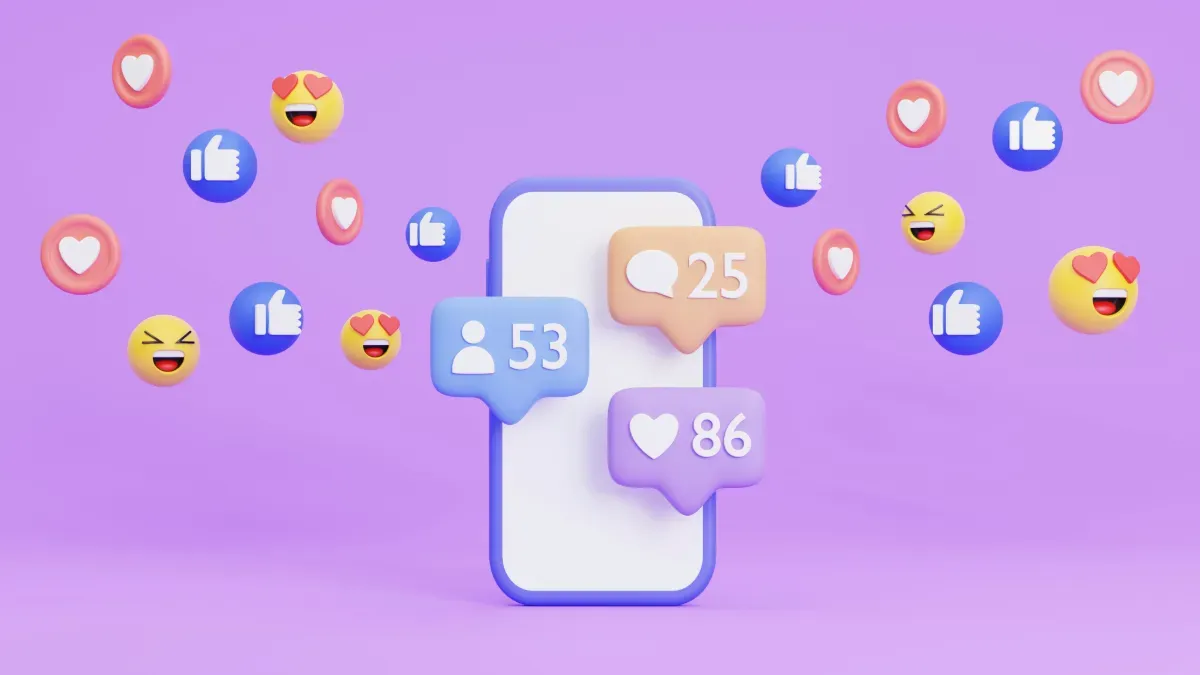Unlock more with the Adobe Podcast Premium plan 
- Video support for MP4, MOV, and more
- Bulk upload files for enhancement
- Adjust strength for a more natural sound
- Enhance up to 4 hours a day, files up to 1 GB
- No download limits on Studio projects
- Download original recordings, speaker-separated
- Customize audiograms and captions with themes
- Upload custom backgrounds for audiograms
- All Premium features for design
Enhance Speech
Studio
Design with Adobe Express Premium
Turn your podcast into scroll-stopping social content
You’ve got the content. Now meet your listeners where they are.

Last updated: June 17, 2025
Author: Megan Schmidt, Writer & podcast producer
If you're already putting in the work to make a podcast, don’t let it stop there. Repurposing your episodes for social media is one of the easiest ways to get your show in front of new people.
Why? Because most people don’t discover new podcasts on podcast apps. They find them in the wild: Instagram Reels, YouTube Shorts, TikTok clips: wherever they’re already scrolling. That’s where you meet them.
Here’s how to turn your audio into engaging, bite-sized content people actually want to share, save, and talk about.
Why repurpose podcast content for social?
Let’s be honest: most podcast players aren’t designed for discovery. They’re great for listening, but not so much for reaching people who’ve never heard of you.
That’s where social media comes in. Reels, TikToks, and Shorts are built to push your content to new audiences, and visual content tends to get prioritized by the algorithm. Plus, we're visual creatures. It’s just how our brains are wired.
Creating social content from your podcast isn’t just about marketing, it’s about giving your ideas more room to breathe and be seen. You already did the hard part (recording). Now let’s stretch it further.

Make short clips that pack a punch
Social clips should be quick, clear, and compelling. Think of them like movie trailers for your show.
Some good clip types:
- A hook from your trailer to draw people in
- A hot take, a funny moment, or a surprising insight
- A quote or mic-drop moment you’d want your audience to repost
Length-wise, you’ve got options. Aim for 30–60 seconds for most posts, but don’t be afraid to experiment. Shorter clips (5–10 seconds) can work great for ads or snappy highlights, just make sure you’re giving your voice enough time to come through.
Pro tip: Use Adobe Podcast’s Studio tool to quickly grab and edit your favorite soundbites without scrubbing through waveforms. It’s all text-based, so you can cut or clean things up as easily as editing a doc.
Add visuals—even simple ones
Adding visuals to your audio makes it more shareable—and doesn’t have to be complicated.
Try:
- Audiograms: Turn audio into a quick, animated post with waveform and captions
- Branded graphics: Use templates in Adobe Express to keep things consistent
- Subtitled video clips: These tend to perform better than audio-only posts
You can export audiograms directly from Adobe Podcast with just a few clicks. Then, customize them further in TikTok, Instagram, or other platforms for added flair.
Even basic visual consistency (same fonts, colors, or logo placement) goes a long way in building recognition and trust with your audience.
Schedule your content like a pro
Posting consistently doesn’t mean you need to be glued to your phone.
Tools like Buffer, Hootsuite, and Loomly let you batch your content and schedule it in advance, freeing you up to focus on actually making stuff.
A few tips:
- Batch-produce 2–4 clips at a time
- Write out a few quick captions with CTAs like “🎧 Listen now” or “Tag a friend who’d love this”
- Schedule for peak times when your audience is most active
- Jump into the comments when you can to keep the conversation going
Organic growth takes time, but it tends to bring in a more loyal, engaged audience than ads alone. And that kind of audience? Gold.
Let your podcast live beyond the episode
Social media isn’t just a megaphone: it’s a conversation starter. Repurposing your podcast content helps you show up where your audience already is, without doubling your workload.
Start small. Post one clip per episode. Watch what hits. Adjust from there.
And remember: you made something worth listening to. Now’s your chance to make it worth sharing, too.
About the author: Writer, comedian, podcast producer: Megan loves stories that stick, told sometimes with words, sometimes with waveforms, always with heart.



